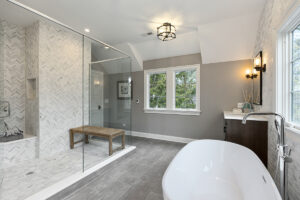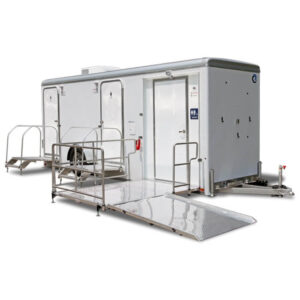3D Design Consulting has become more commonplace in non-industrial settings, and legal questions are emerging around intellectual Property. Patents, industrial design rights, copyrights, and trademarks may apply.
3D printers can produce a wide range of materials for super-strong industrial products, from easy-to-shape plastic to carbon fiber. This flexibility allows them to serve virtually any industry.

- Virtual Design
Virtual design and construction (VDC) is a project management method that uses digital tools to help build projects before they’re even built. This helps reduce the number of miscommunications, misunderstandings, and delays that often occur in design-build projects. It also allows designers to make more changes during construction, which benefits both the client and the contractor.
One of the key steps in VDC is a process called 3D Printing, which involves using technology to create physical objects from digital models. Engineers often use this technology to quickly prototype new parts or to produce lightweight geometric shapes that would be difficult or impossible to manufacture with traditional manufacturing methods.
Unlike subtractive processes like drilling, casting, or injection molding, 3D Printing can significantly reduce product development time, allowing businesses to get their products and services on the market much faster. This is especially important for small-scale manufacturers who might not have the resources to invest in traditional manufacturing technologies or tooling.
The first step in the process of 3D Printing is a process called modeling, which involves creating a digital model of an object that will serve as the basis for its creation. This is usually done with computer-aided drafting software, which enables designers to view and manipulate their designs in a more immersive way. Virtual reality (VR) is also increasingly being used to improve the design and modeling processes. For example, it can help students visualize their architectural designs more effectively by letting them walk around a virtual model of a building and seeing how it will look when completed.
Once the model is finished, it’s time to begin the actual printing process. There are several different types of 3D printers on the market, but most work in a similar way by displacing layers of a plastic or resin-like polymer to form the desired shape. The printers then wait for each layer to dry before dispensing the next.
The entire process can be streamlined with the use of advanced software solutions. These software programs can automatically repair models, manage material inventory, and monitor the progress of each print job to ensure that the final product meets quality standards. Some of these solutions also include post-processing applications that remove support structures, post-cure the resin, depowder parts, and apply surface finishing techniques.
- Slicing
Once the virtual design of a 3D model has been made using computer-aided design (CAD) software, or scanned with a 3D scanner and stored in a digital file, it needs to be prepared for Printing. This is done by slicing the model into thousands of thin, horizontal layers with dedicated slicing software. The slicing process works like a blueprint that the 3D printer will use to build the object from the bottom up, starting with the base and moving onwards.
The slicing software converts the CAD model into a series of two-dimensional layers, or slices, and calculates print parameters for each slice. It then saves the information in a numerically controlled computer language that the 3D printer will understand.
There are many different slicing software programs available to users, and most manufacturers of 3D printers have their own version of the software. However, the majority of the slicing software is built around the standard STL format.
Depending on the slicing software, it will allow users to move and scale their models to ensure they are printed at the right angle and fit the 3D printer bed well. It will also offer users the ability to adjust settings such as material, supports and infill to get the best results from their prints.
If the model contains overhangs, the slicing software can automatically add supporting structures that will hold up the model while it is being printed. This may take the form of a raft, or a brim, or even both, and can help to improve the quality of the finished product.
Once the slicing software has completed its work, it will produce a G-code file that will be used by the 3D printer to create the desired shape of the part or object. This file can be viewed to review the progress of the print and to check for any errors. In some cases, the print can be stopped and restarted if the error is found. The slicing software can also be used to view a history of past prints to identify common mistakes and prevent them from occurring again in the future.
- Printing
The physical creation of an object based on the digital file. Printing is an additive process which creates objects by layering material to build up the final item, reducing lead times and cost.
The most common printing materials are plastics, but metals and other materials can also be printed. The choice of material depends on the desired properties of the final part. In addition to the usual plastics, a wide range of special purpose materials are now available for use with 3D printers including materials designed for heat resistance and water repellency or for specific strength requirements.
Slicing software is used in most 3D printing processes to convert a CAD model into the specific instructions the printer needs to make the object. These instructions are then deposited onto the printing bed in layers, building up the object.
Generally speaking, 3D Printing is slower than traditional manufacturing methods. However, the exact printing time will depend on a number of factors such as the size and resolution of the printed object, the materials used and the speed of the printer.
Most commercial 3D printers can print a single item within hours, but it may take days to print multiple items or larger or more complex items. This is because the print area of most machines is limited, and a 3D printed object must be built up in layers which are then joined together to form the finished item.
There are a few different types of 3D printers, each using different technologies to produce the final print. Fused deposition modeling and fused filament fabrication are catch-all terms for any type of printer that uses a hot end to extrude molten material onto the printer’s build bed. Generally speaking this is plastic, but it can be any material that will melt when heated.
Other popular technologies include sintering (uses lasers, electric arcs or electron beams to fuse a powdered material together), melting (direct metal laser sintering or selective laser sintering) and stereolithography (photopolymerization). Chuck Hull invented the first home 3D printer using the stereolithography process in 1986. The industry took off in the 1990s and 2000s, with significant progress made by Stratasys, 3D Systems and others.
- Finishing
Whether you’re 3D printing metal or plastic, finishing is an important step to get the best results. Surface finishes can be used to add texture, improve chemical properties or even change the appearance of a printed part.
For example, when working with plastics, a common finish is painting. This process can be applied to a single layer or to multiple layers at once, depending on the desired result. The quality of the paint and the method used to apply it will determine how well the color sticks, how smooth the texture is and the overall look of the part.
It is also possible to add textures to 3D printed parts with special coatings or etching techniques. Abrasive blasting, for instance, involves propelling abrasive materials at high speeds against a print to create a frosted or textured finish. Chemical etching, on the other hand, uses specific chemicals to selectively dissolve the surface of a part.
Metal 3D printing processes like direct metal laser sintering (DMLS) and selective laser melting (SLM), are ideal for creating parts with intricate details and a high level of physical accuracy. However, they’re more brittle than FDM parts and require support structures to keep the model in place while Printing. These structures leave behind blemishes and striations that need to be smoothed out.
Other surface treatments can make a metal or plastic part stronger and more durable. Shot peening is one such treatment that strengthens an object by reducing its tensile stress and increasing compression stresses. It also increases its ability to resist fatigue, cracking and erosion.
Lastly, some parts require a particular surface finish to function properly. Interference fit components, for instance, rely on the quality of the mating surfaces to work correctly. Similarly, some medical and aerospace parts need to be coated to enhance their biocompatibility or electrical conductivity.
If you’re looking to take your 3D prints to the next level, use Xometry’s Instant Quoting Engine to get quotes in minutes. Our expert team is ready to help you bring your idea to life and produce quality parts, quickly and affordably.


